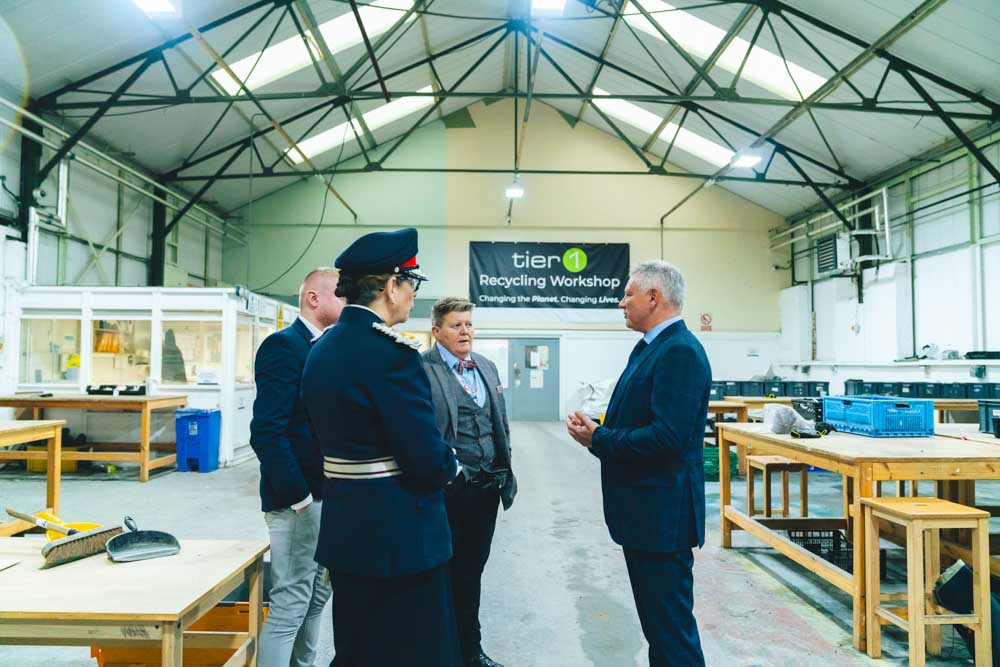The rapid adoption of cloud computing gave businesses a lifeline in early 2020; it provided the agility needed in a time where adaption was essential. The global pandemic still shows little sign of abating, but businesses are already building-back, many with a fresh outlook on their IT and business operations. Can this mindset change help revive organisations? One thing is certain; business recovery from this recession will be unlike any other. What role does the cloud play as we emerge from this global recession?
Aside from the more obvious benefits that have enabled flexible collaborative working practices in more recent times, the cost-effectiveness, scalability and accessibility of the cloud have resulted in a decline in on-premises data centres and a huge growth of cloud applications in the last few years. This is a trend that began well before the pandemic.
Whilst some industry regulations require certain information to be securely stored on in-house servers, the cloud provides an opportunity for businesses to fully or partially migrate to both public and private cloud facilities. This reduces the need to build, secure, operate and maintain a physical data centre infrastructure. It also provides a reliable and secure backup enabling business continuity in the event of a crisis.
The responsibility for updates, upgrades and maintenance falls to the cloud service provider, easing pressure on IT departments. Whilst the transition to the cloud comes with an increased risk to data security, this can be addressed with education, training and operational restructuring. As the majority of servers are over-capacity for their organisation’s requirements, many CISOs are finding that it is possible to downsize or decommission some servers altogether. Whether partial or full migration, fewer physical servers result in reduced energy costs and subsequently, a smaller carbon footprint, whilst the enhanced working efficiencies of the cloud also deliver further cost savings.
In January 2021, industry analysts, Gartner, forecast that global IT spending related to remote working will total $332.9 billion – an increase of almost 5% from 2020. Many business leaders have found that the reality of remote working resulted in increased productivity and employee satisfaction. Realising the cost savings, many businesses have permanently adopted a hybrid operational model. As such, their office space requirements have changed; some businesses have chosen to close floors or entire buildings, whereas others are looking to relocate to smaller premises.
The growth of cloud computing.
Back in 2017, Gartner predicted that the growth of the cloud and industrialised services could spell the decline of the traditional data centre estimating that by 2020 spending on each element of the dual infrastructure would be on par.
At the start of this year, Garner predicted that worldwide IT spending would increase by 6.2% in 2021, totalling $3.9 trillion. This includes a 5.3% increase in total infrastructure spend. Much of this is expected from the leading cloud providers as they expand themselves to meet the demand from enterprises increasing IaaS spend. The top five global cloud providers now share 80% of the market. In addition, the telecoms industry has responded rapidly to the increase in online and video conferencing.
Dubbed by experts as ‘the year of the cloud’, worldwide end-user spending on public cloud services is forecast to grow by 23.1% in 2021, totalling $332.3 billion; increasing from £270 bn in 2020. Driven by emerging technologies, cloud spending has become mainstream. Cloud growth is expected to exceed $480 bn in 2022.
In 2020, the global IaaS market grew by 40.7%, totalling $64.3bn*.
The rapid growth of the IaaS sector provides recovering businesses the opportunity to migrate their systems to the cloud gradually. Gaining greater IT agility, allows them to capitalise on increased efficiencies, ROI and make substantial cost savings.

What do you need to consider when decommissioning your data centre?
Whether you are transitioning to the cloud or undertaking secure office relocation, there are essential things to know about ITAD and the decommissioning of your on-premises server – it is a highly critical process for any business.
A major decommissioning project can be a daunting prospect. There is much to consider; planning, asset management inventories and logistics must all be led by data governance principles. Disruption must be kept to a minimum to ensure business continuity. CISOs are tasked with maximising the ROI whilst mitigating any risks to their data to ensure they remain compliant with data protection legislation. Since the General Data Protection Regulation became law, auditing and tracking of all assets is vital.
Whilst it is possible to decommission your data centre in-house, it is a highly complex and specialised process. To minimise downtime, maximise efficiencies and reduce the demands on internal resources, many choose to outsource ITAD to data destruction services that have the resources and qualified technicians to manage the decommissioning of your data centre quickly and efficiently, without the upheaval.
Not only is it cost-effective, but by collaborating with an accredited ITAD supplier, you can guarantee that your data-rich data centre is safely and securely decommissioned with a full ITAD chain of custody. Every asset will then have its own IT assets disposal accreditation certificate, should you ever need it. This ensures you remain compliant with the GDPR data disposal regulations along with relevant industry and environmental legislations, such as WEEE.
If you choose you employ a professional ITAD disposition company, what can you expect?
How do you decommission your data centre?
As with all projects of this importance and size – planning is one of the most important elements. This will help you to avoid delays, wasted time, resources and, of course, money.
A pre-move audit assessment is the best place to start. This scoping exercise provides a basis for more a detailed IT audit. You will be assigned a dedicated PRINCE2 qualified project manager to oversee the project in full, making sure any downtime is kept to an absolute minimum and that the decommissioning project is completed as scheduled, and on time.
A secure back-up and a comprehensive inventory should be taken for each asset that is to be decommissioned. Each item is tracked with asset tagging. This doesn’t just apply to the servers, hard drives, and networking hardware; it includes storage racks, cabinets, keyboards and power equipment. Should you be relocating the server, the process will classify which software licences need to be retained and which ACL user permissions must be granted. As you would expect, everything is documented to professional accreditation standards.
This detailed audit will help you identify ineffective, redundant IT assets or software. End of life IT assets that can be reused and recycled are documented and tagged. By recycling your redundant IT equipment with your ITAD supplier, you will not only be doing your bit to prevent e-waste, your ITAD partner will identify components that can be reused in the remanufacturing process for new devices. This helps your business positively contribute to the circular economy. You effectively sell redundant IT assets and will receive residual payments for the old hardware to be recycled, maximising your ROI and ensuring the best possible return.
To make the process as seamless as possible, many IT asset disposal companies offer on-site data erasure. Data wiping services can also perform this sanitisation off-site at their specialist facilities. It is important to ensure that any equipment removed or relocated should be packed in protective packaging, such as flight casing, and transported in secure GPS tracked vehicles, adding a further layer of security.

Offering the same capabilities, the cloud can reduce the requirement or the number of servers required by an enterprise. The growth of the global IaaS sector and migration to the cloud can aid recession recovery by giving businesses far greater flexibility, improved efficiencies, increased ROI and multiple cost savings that can help organisations recover faster.
When it comes to big data ITAD and something as crucial as data centre relocation or retirement, it is always a good idea to partner with an accredited IT asset disposal service to deliver a quick, cost-effective and secure decommissioning. By choosing this route, CISOs can be certain that they have done all they can to protect company data and avoid any future data security issues, whilst keeping your business running without significant interruption.
*Gartner, April 2021.
tier1 can assist with on-site data erasure, data centre decommissioning or secure office relocation for servers of any size. We specialise in secure data destruction for large corporations, financial institutions and the healthcare sector. To find out more, call us on 0161 777 1000 or visit tier1.com
Resources.
Gartner Consulting, Transpere, BMC, Quostar, WEI,



